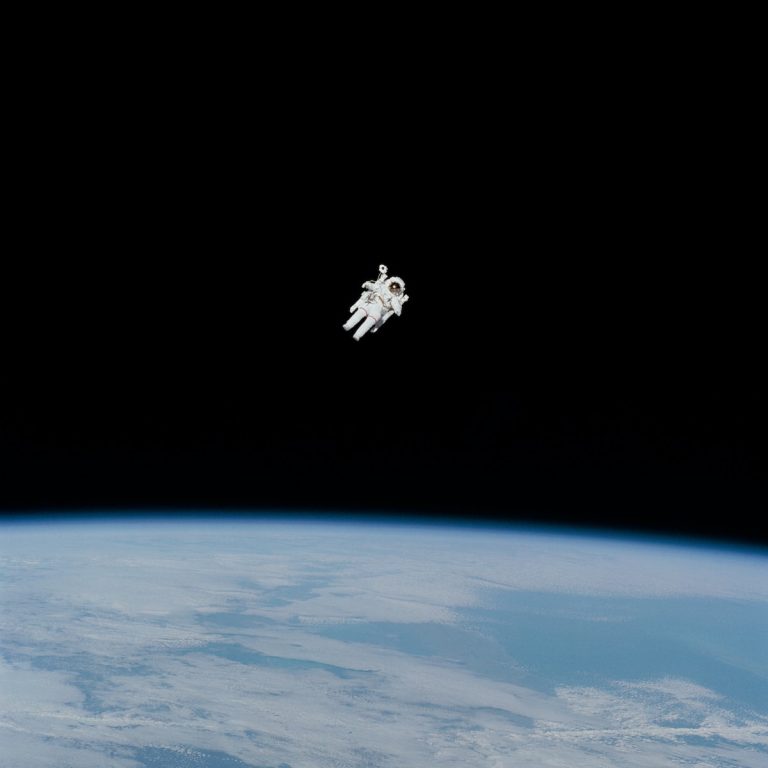Ever wondered how long it takes to get to Saturn? The answer isn’t as simple as it seems. Various factors influence the journey’s length, including the kind of spacecraft used, its speed, trajectory, and the technology at hand. This article will delve into these variables, providing a comprehensive understanding of the complex equation behind space travel, particularly the journey to Saturn.
Setting the Stage: Understanding Distance in Space
Understanding the journey to planet Saturn begins with understanding space distances. Unlike terrestrial distances, space distances are vast and beyond our usual comprehension. A simple comparison can give a glimpse of the enormity of space distances. If you’re driving to a store 10 km away at a speed of 50 km/hr, you’ll reach in approximately 12 minutes.
But space distances dwarf these earthly scales. For instance, the Apollo missions to the moon covered a distance of about 375,000 km, and it took about three days. And that’s just our closest celestial neighbor.
Saturn is much farther. The distance from Earth to planet Saturn varies depending on both planets’ positions in their orbits around the Sun. At its closest, Saturn is nearly 1.2 billion km away. At its farthest, the distance extends to about 1.7 billion km.
Speed Matters: The Role of Velocity in Space Travel
The speed at which a spacecraft travels significantly impacts its journey time. The faster the spacecraft, the lesser time it takes to reach its destination. However, achieving high speeds and maintaining them isn’t straightforward.
For instance, Voyager 1 spacecraft and Voyager 2, spacecraft destined for the outer planets, reached sustained speeds of around 17 kilometers/sec. To reach this speed, the Voyager spacecraft used the gravitational pulls of objects in our solar system, a technique known as ‘gravitational slingshot’. Even at these impressive speeds, it took Voyager 1 spacecraft about three years and two months to reach the ringed planet.
Speed of Light: How Feasible Is It?
What if we could travel at the speed of light? Light travels at a speed of 186,282 miles per second. At this speed, it would still take about 746 days to reach Saturn.
However, the idea of traveling at the speed of light is currently beyond our technological capabilities. The fastest speed achieved by a manned spacecraft to date is 24,791 mph (39,897 km/hr), a record set by the returning Apollo 10 astronauts in May 1969. At this rate, it would take over 23 years to get to Saturn.
The Role of Technology: The Evolution of Spacecraft and Their Impact
The technology used in space exploration missions plays a crucial role in determining the journey’s length. Different spacecraft have taken varying amounts of time to reach Saturn due to differences in their technology and mission plans.
For instance, Pioneer 11, launched in 1973, took six and a half years to reach Saturn. In contrast, Voyager 1, launched in 1977, took three years and two months, while Voyager 2, launched in 1977, took four years. The Cassini spacecraft, launched in 1997, took six years and nine months to arrive.
The New Horizons spacecraft, which boasts the most advanced engine available, took a short two years and four months to reach Saturn. The variation in travel times is primarily due to the different routes taken, the type of engine propelling the spacecraft, and whether the spacecraft intended to orbit Saturn or perform a flyby.
The Human Factor: How Human Travel Influences Journey Time
While we’ve sent several spacecraft to Saturn, none of these space exploration missions have had human occupants. This is a crucial factor to consider when calculating travel times because humans can’t withstand the same conditions as unmanned spacecraft.
For example, while unmanned spacecraft can withstand high G-forces during takeoff and reentry, humans can only tolerate between 3 to 8 Gs. Therefore, spacecraft carrying humans must travel at slower speeds.
The fastest that humans have ever traveled in space is 24,791 mph (39,897 km/hr). At such a speed, it would likely take a manned spacecraft between 8 to 12 years to reach Saturn. However, the improvement of technology and better understanding of the human body’s capacity in space could potentially reduce this time in the future.
The Challenge of Reaching Saturn
Saturn, with its stunning rings and massive size, is a fascinating destination for astronomers and space enthusiasts. However, its distance from planet Earth makes it a challenging planet to reach.
Aside from the distance, the journey to the sixth planet presents several obstacles. These include the need for a spacecraft to maintain a perfect trajectory, the harsh environment of Saturn with high temperatures, strong winds, and intense radiation, and the demands of slowing down enough to enter Saturn’s orbit.
Despite these challenges, the rewards of exploring Saturn and the advancements in technology make the quest to Saturn a worthy endeavor.
The Journey to Saturn: A Summary
In summary, the answer to the question, “how long does it take to get to Saturn?” is multifaceted. It depends on the type of spacecraft, the speed at which it travels, its trajectory, and the current technology.
Given the current state of technology and considering unmanned spacecraft, the journey to Saturns atmosphere can take anywhere between two and a half years to over seven years. However, for manned space travel, the journey could take between 8 to 12 years.
As we continue to innovate and evolve our technology, we can hope for more efficient and faster ways to explore the solar system, including the journey to Saturn. The future of space travel certainly looks promising as we inch closer to unraveling the mysteries of the outer planets.


0 Comments